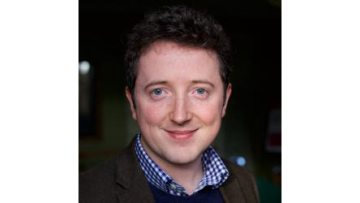Average beta burst duration profiles provide a signature of dynamical changes between the ON and OFF medication states in Parkinson’s disease
Duchet, B
Ghezzi, F
Weerasinghe, G
Tinkhauser, G
Kühn, A
Brown, P
Bick, C
Bogacz, R
PLOS Computational Biology
volume 17
issue 7
(07 Jul 2021)
Wed, 22 Sep 2021
09:00 -
10:00
Virtual
Stochastic Flows and Rough Differential Equations on Foliated Spaces
Yuzuru Inahama
(Kyushu University)
Further Information
Abstract
Stochastic differential equations (SDEs) on compact foliated spaces were introduced a few years ago. As a corollary, a leafwise Brownian motion on a compact foliated space was obtained as a solution to an SDE. In this work we construct stochastic flows associated with the SDEs by using rough path theory, which is something like a 'deterministic version' of Ito's SDE theory.
This is joint work with Kiyotaka Suzaki.
How robust are the estimated effects of nonpharmaceutical interventions against COVID-19?
Sharma, M
Mindermann, S
Brauner, J
Leech, G
Stephenson, A
Gavenciak, T
Kulveit, J
Teh, Y
Chindelevitch, L
Gal, Y
Advances in Neural Information Processing Systems
volume 2020-December
(01 Jan 2020)
Bayesian deep ensembles via the neural tangent kernel
He, B
Lakshminarayanan, B
Teh, Y
Advances in Neural Information Processing Systems
volume 2020-December
(01 Jan 2020)
Seq2Tens: An Efficient Representation of Sequences by Low-Rank Tensor Projections.
Tóth, C
Bonnier, P
Oberhauser, H
ICLR
(01 Jan 2021)
Hydrodynamic dispersion relations at finite coupling
Grozdanov, S
Starinets, A
Tadić, P
Journal of High Energy Physics
volume 2021
issue 6
(30 Jun 2021)
Traces of powers of matrices over finite fields
Gorodetsky, O
Rodgers, B
Transactions of the American Mathematical Society
volume 374
issue 7
4579-4638
(28 Apr 2021)
Four Oxford Mathematicians have been awarded 2021 London Mathematical Society (LMS) Prizes. Ehud Hrushovski is awarded a Pólya Prize, Endre Süli is awarded the Naylor Prize and Lectureship, and Patrick Farrell and Stuart White receive Whitehead Prizes.
Key epidemiological drivers and impact of interventions in the 2020 SARS-CoV-2 epidemic in England
Knock, E
Whittles, L
Lees, J
Perez-Guzman, P
Verity, R
FitzJohn, R
Gaythorpe, K
Imai, N
Hisley, W
Okell, L
Rosello, A
Kantas, N
Walters, C
Bhatia, S
Watson, O
Whittaker, C
Cattarino, L
Boonyasin, A
Djaafara, B
Fraser, K
Fu, H
Wang, H
Xi, X
Donnelly, C
Jauneikaite, E
Laydon, D
White, P
Ghani, A
Ferguson, N
Cori, A
Baguelin, M
Science Translational Medicine
volume 13
issue 602
(22 Jun 2021)





